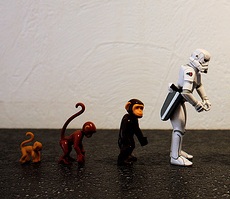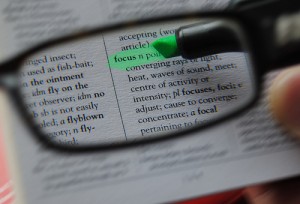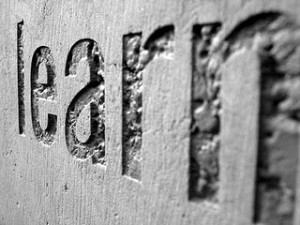 For some years now, I have been re-thinking my approach to teaching. The overarching focus of my evolution as a teacher is on the shifting of ownership. After all, who is supposed to own the learning?
For some years now, I have been re-thinking my approach to teaching. The overarching focus of my evolution as a teacher is on the shifting of ownership. After all, who is supposed to own the learning?
I am in the process of evolving from a teacher-centered classroom. where I am the provider of knowledge and the designer of assessments, to a classroom where my role is to develop and support my students’ learning autonomy.I strive for a learner-centered environment where students actively participate to construct their knowledge and reflect on their learning process.
As part of my evolutionary process I have selected some elements to focus on each year. Last year I searched for better ways to engage my students through connections. You can read my blog post about that focus here: How I’ll Engage My Students as Learners: Six Ways to Make Connections.
2012-13 Focus: Assessment

For this school year, my efforts to evolve my teaching practice are centered on assessment.
What is the objective of assessments?
Is it how well my students can regurgitate facts or how well they can find the “formula” to solve a problem? What if the day before an assessment a student had a cello recital to prepare for, or they had a basketball game and did not arrive home until 10:00 pm? How can a grade on a quiz or a test reflect their best under those conditions?
 I see assessment as an ongoing process that informs me and my students and gauges the progression of learning. I partner with my students to facilitate their learning, and they appreciate not being constrained by fixed deadlines and dead-end quiz scores. They prefer the ample opportunities we create to demonstrate that they can accomplish every single one of our Learning Objectives.
I see assessment as an ongoing process that informs me and my students and gauges the progression of learning. I partner with my students to facilitate their learning, and they appreciate not being constrained by fixed deadlines and dead-end quiz scores. They prefer the ample opportunities we create to demonstrate that they can accomplish every single one of our Learning Objectives.
Authentic Assessments
I like to offer a variety of authentic assessments in which students are asked to perform real-world tasks that demonstrate meaningful application of essential physics concepts and scientific skills. The most important feature of authentic assessments is that they provide multiple paths to the students’ demonstration of their learning.
This is an example from our kinematics unit. The students were presented with a Lab Practicum challenge:
At what position will two cars moving at different speeds collide if they are released from opposite ends at different times? Cars are 2 meters apart and one car is released 3 seconds after the first one.
Instead of writing a traditional lab report, students created a video of their lab by engaging in a collaborative approach to the construction of knowledge. Take a look at the work of one of the teams, as they present their video in a TV news show format, reporting on a train accident. The team used the experiment as a model to investigate the incident and demonstrated their understanding of kinematics through multiple representations of knowledge.
Another assessment asked the students to pose a question and apply their knowledge of kinematics to answer their question. Within the final product they had room for different modes of expression. Here are a few examples:
Trey’s Project: If baseball was played on the moon, how far would a Ian Kinsler home run go?
Hannah’s Project: How does my free-throw shot compare to Coach Schroeder’s shot?
Dylan’s Project: When the blue bird in Angry Birds splits into three, do the speeds change?
McKenna’s Project: What’s the initial velocity at which I was thrown in a cheerleader’s cradle?
The class also completed a series of Performance Task Assessments where they were presented with context rich scenarios that required a meaningful application of the concepts. Context-rich tasks discourage the ‘plug and chug’ approach. These multi-step problems are constructed as a short story in which the main character is the student.
Evaluation
At the end of the trimester I gave the class a thorough class evaluation. It was meant to help them look back into the first three months of class and think deeper about their learning. Selected questions and student responses can be seen in this Google Doc slideshow: Honors Physics Class Evaluation
So, where are you in your evolution as a teacher?
Images: Creative Commons, Stefan & toolstop
Ideas: Thanks to Kelly O’Shea and John Burke for inspiration in creating the evaluation questions.
Dolores Gende
Latest posts by Dolores Gende (see all)
- My Teaching Evolution: Assessment - December 11, 2012
- Aggregate, Curate and Create Your Own Textbook - January 24, 2012
- How I'll Engage My Students as Learners: Six Ways to Make Connections - September 6, 2011


Delores,
Wonderful! It’s exciting to see your passion for learning and growing continuing after 28 years of teaching. You inspire excellence, not only in the students you teach, but in the other educators who get a chance to read posts like this. Thank you!
I am evolving as a teacher by shifting ownership too, and, as a result, my teaching experiences have never been better. I wrote about student-centered learning recently here.
Sincerely,
Denise
Denis,
Thank you for your kind comments.
I strongly believe that being a role-model learner (or as you say in your blog posting: chief learner) is an essential element in helping our students develop as long-life learners.
I have added your blog to my list!
This is all very exciting! Thank you for sharing! How do you evaluate these authentic assessments? Have you created rubrics to assess learning?